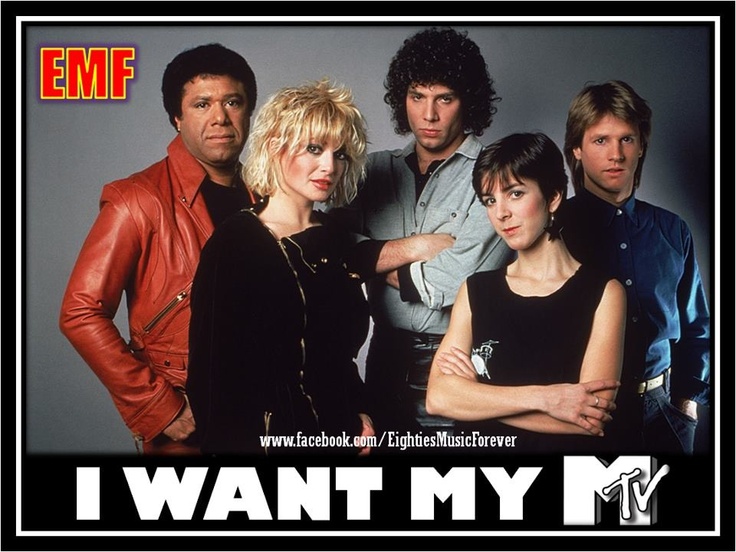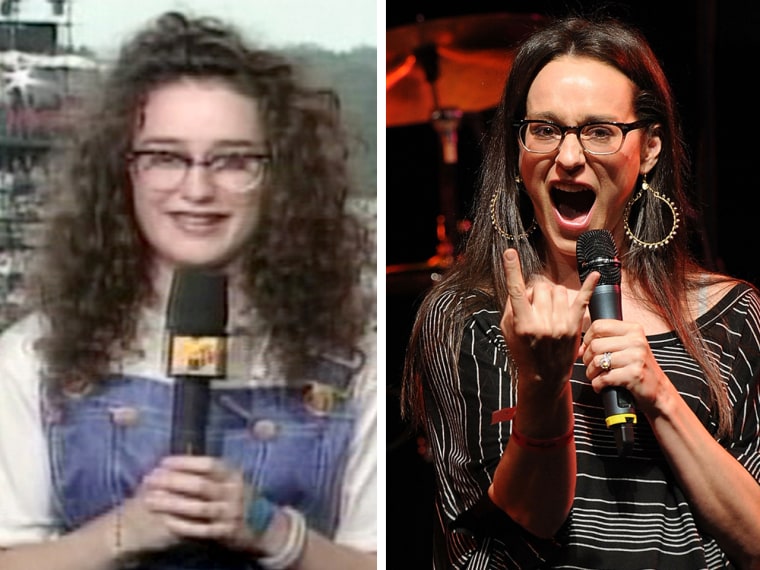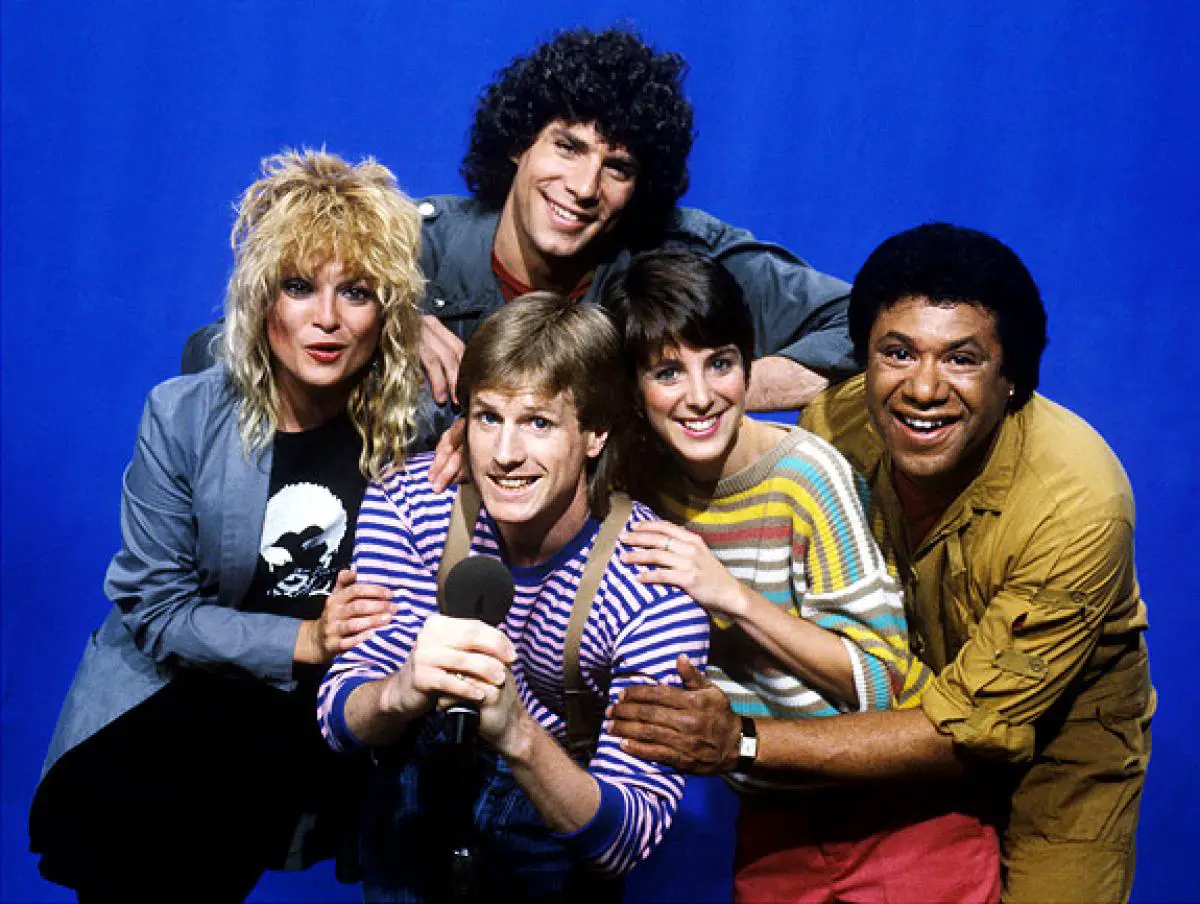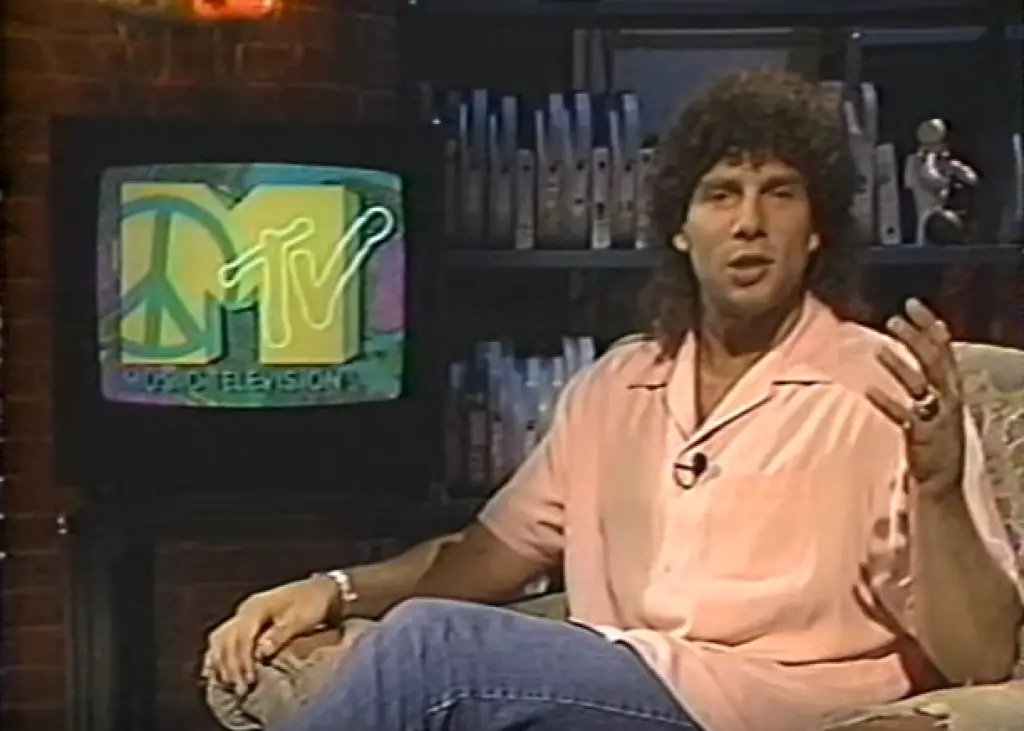If you’re a fan of music and television, you’ve likely heard of MTV, the iconic music video channel that revolutionized the way we consume music. But who were the first VJs to grace our screens, and who broke the color barrier on the channel? In this blog post, we’ll delve into the history of MTV and answer these questions and more. Join us as we explore the first 10 videos ever played on MTV, the first black artist to appear on the channel, and the most played song in MTV history. Get ready to go back in time and discover the fascinating origins of this groundbreaking channel.

Unveiling the Pioneer DJ of MTV: The Trailblazer Who Started it All.
Nina Blackwood, a well-known American disc jockey and music journalist, holds the distinction of being the first DJ on MTV. She was one of the original five MTV VJs who revolutionized the music industry by introducing music videos to television audiences. Along with her fellow VJs Mark Goodman, J. J. Jackson, Alan Hunter, and Martha Quinn, Blackwood quickly became a household name, known for her distinctive style and music knowledge.
Before her career with MTV, Blackwood worked as a model and actress. However, it was her passion for music that led her to pursue a career in radio, and ultimately to become one of the most recognizable faces on television. As the first DJ on MTV, Blackwood helped to pave the way for other music personalities, and her contributions to the industry have had a lasting impact. Today, she is remembered as a trailblazer and a music icon, who helped to shape the course of popular culture in the 1980s and beyond.
>> Must read What is the best MTV video of all time?
The Groundbreaking Musician Who Shattered MTV’s Racial Stereotypes
In the early days of MTV, the music channel was criticized for its lack of diversity on air. But that changed on March 10, 1983, when Michael Jackson broke the color barrier with his iconic music video, “Billie Jean.” With this groundbreaking video, Jackson became the first black artist to receive heavy rotation on MTV.
“Billie Jean” was a critical turning point for MTV, which until then had been accused of catering only to white audiences. The video’s combination of cutting-edge visuals, dance moves, and Jackson’s undeniable talent and charisma made it an instant classic.
Jackson’s success on MTV helped pave the way for other black artists, who also became regulars on the channel. It was a moment of great significance in the history of music and media representation. Jackson’s groundbreaking work on MTV helped to change the industry and pave the way for greater diversity and inclusion in music videos and beyond.
Trending now – What is the most famous music video of all time?
“Looking Back at the Inaugural Lineup of MTV’s First 10 Music Videos”.
The launch of MTV on August 1, 1981, was marked by the airing of the first 10 videos on the channel. The very first video to be played was “Video Killed the Radio Star” by The Buggles. This upbeat and futuristic song set the tone for MTV’s focus on music videos as the primary source of entertainment for its audience. The second video to be aired was “You Better Run” by Pat Benatar, followed by “She Won’t Dance With Me” by Rod Stewart, and “You Better You Bet” by The Who.
The list of the first 10 videos on MTV also included “Little Suzi’s on the Up” by Ph.D., “We Don’t Talk Anymore” by Cliff Richard, “Brass in Pocket” by The Pretenders, and “Time Heals” by Todd Rundgren. These videos covered a range of genres, including rock, pop, and new wave, and showcased the diversity of music that MTV was bringing to its viewers.
It is fascinating to note that “Video Killed the Radio Star” was chosen as the first video to be played on MTV because it was a catchy tune with an interesting video that captured the attention of viewers. This decision set the standard for the channel to feature music videos that were not only good to listen to but also visually appealing.
Overall, the first 10 videos on MTV were a mix of classic hits and new releases that set the tone for the channel’s future success. They paved the way for the music video revolution and established MTV as a cultural icon that would go on to influence generations of music lovers.

Breaking Barriers: Uncovering the First Black Music Video to Air on MTV
MTV’s early days were marked by a lack of racial diversity in the music videos it played, with many black artists struggling to get airtime. However, in 1983, Michael Jackson’s “Billie Jean” became the first video by a black artist to receive heavy rotation on the network. This groundbreaking moment opened up the door for other artists of color to be featured on MTV.
“Billie Jean” was a song that addressed the issue of paternity and was accompanied by a visually stunning music video that showcased Jackson’s signature dance moves. The video’s success was due in part to MTV’s decision to play it in regular rotation, which helped to break down the network’s racial barriers.
The success of “Billie Jean” set a precedent for other black artists to be featured on MTV, and soon artists like Prince, Lionel Richie, and Whitney Houston were receiving regular airtime. The impact of “Billie Jean” on the music industry cannot be overstated, as it paved the way for a more diverse range of voices and perspectives to be heard on MTV and beyond.
Uncovering the Groundbreaking Trailblazer: The First Black Artist to Appear on Television.

Nat “King” Cole was a legendary musician and performer who became the first black artist to host a nationally broadcast television show in the United States. His show, The Nat “King” Cole Show, premiered on November 5, 1956 on NBC. It was a 15-minute prime time variety show that featured Cole’s performances as well as guest appearances by other popular artists of the time.
Cole was a trailblazer in the entertainment industry, breaking down barriers and paving the way for other black artists to follow in his footsteps. He was cool, handsome, and incredibly talented, with a smooth voice that captivated audiences around the world.
Despite the challenges and obstacles he faced as a black performer in a predominantly white industry, Cole remained dedicated to his craft and continued to make music that touched the hearts of millions. His influence on American culture cannot be overstated, and his impact on the world of television was profound.
The Nat “King” Cole Show was a groundbreaking moment in television history, and it paved the way for other black artists to have their own shows in the years that followed. Cole’s legacy continues to inspire and uplift people of all ages and backgrounds, and his music remains a beloved part of American culture to this day.
Uncovering the Debut Video of MTV: A Trip Down Memory Lane.
MTV revolutionized the way we consumed music by introducing music videos to the world. The very first video that aired on MTV was “Video Killed the Radio Star” by The Buggles. Ironically, the song itself talks about how video technology will take over the radio industry. But little did anyone know that it would be the start of a new era in the music industry.
The video featured the band members performing in a futuristic set with bright colors, flashing lights, and computer-generated effects. It was a perfect match for the song’s catchy melody and memorable lyrics. The video became an instant hit and set the tone for what was to come on MTV.
The Buggles’ “Video Killed the Radio Star” was a significant moment in music history. It paved the way for music videos to become an essential part of the music industry. The song and the video are still remembered and cherished to this day. It’s fascinating to think how one little music video could change the trajectory of music forever.
The Pioneers of MTV Videos: Uncovering the First Video Jockeys
MTV, the popular music television network, revolutionized the way music was consumed in the 1980s. As music videos became more and more popular, MTV quickly became the go-to channel for music enthusiasts. The very first music video that was shown on MTV was “Video Killed the Radio Star” by the Buggles. This video signaled the beginning of a new era in music entertainment. However, the question remains, who played the videos on MTV in the early days?
In the early days of MTV, the channel’s distribution was limited, and it was tough to come by. However, the rallying cry of “I want my MTV” became a mantra for consumers, and the channel quickly gained popularity. The videos shown on MTV were played by VJs or Video Jockeys. The first five VJs on MTV were Nina Blackwood, Mark Goodman, Alan Hunter, J.J. Jackson, and Martha Quinn. These VJs soon became household names, and they were instrumental in promoting the channel and the music videos it played.
In the early days of MTV, the VJs played an essential role in the channel’s success. They not only played the videos, but they also introduced them, provided background information, and interviewed artists. Their personalities and love for music helped to create a unique viewing experience for MTV’s audience. As the channel gained more popularity, the VJs became more prominent, and they started hosting their shows.
In conclusion, the first music video shown on MTV was “Video Killed the Radio Star” by the Buggles. The videos on MTV were played by VJs, including Nina Blackwood, Mark Goodman, Alan Hunter, J.J. Jackson, and Martha Quinn. These VJs played an essential role in the channel’s success, and their personalities and love for music helped to create a unique viewing experience for MTV’s audience.
Uncovering the Chronological Order: Did MTV or VH1 Come First?
MTV, the iconic music television channel, was established in 1981 and quickly became a cultural phenomenon. In just four years, MTV had become a household name, and its impact on the music industry was undeniable. As a result, it paved the way for other music channels to emerge, and VH1 was one of them. VH1 was launched in 1985, four years after MTV, and became an instant hit.
While MTV focused on discovering new artists and revolutionizing the music video format, VH1 carved out its own niche. The channel catered to an older demographic, focusing on nostalgia and classic music. VH1’s programming included music documentaries, concerts, and interviews with classic artists from the 1960s, 70s, and 80s. The channel was a hit with viewers who were interested in music history and the evolution of popular culture.
In contrast to MTV’s focus on the latest trends and new artists, VH1’s programming was geared towards those who were nostalgic for a time gone by. VH1 provided an alternative to the fast-paced, youth-oriented programming of MTV. It appealed to a more mature audience who appreciated the music of their youth and wanted to learn more about the history of popular music.
In conclusion, the quick rise of MTV paved the way for other music channels like VH1 to emerge. While MTV focused on discovering new artists and revolutionizing the music video format, VH1 carved out its niche in making nostalgia big business. MTV and VH1 may have started at different ends of the musical spectrum, but both have had a significant impact on the way we consume music and popular culture.
The All-Time Favorite Music Video on MTV: Which Song is the Most Popular?
MTV has been around for decades and has played countless music videos throughout its history. However, one song has stood out as the most played on the network – “Thriller” by Michael Jackson. This iconic song and its accompanying music video took the world by storm when it was released in 1983. It was a groundbreaking moment for both MTV and Michael Jackson himself.
“Thriller” is a masterpiece that combines elements of horror, pop, and rock to create a unique and unforgettable experience. The music video, directed by John Landis, is a cinematic masterpiece that features zombies, werewolves, and a dance sequence that has become one of the most iconic in music history.
The success of “Thriller” on MTV cannot be understated. It helped to solidify the network as a major force in the music industry and cemented Michael Jackson’s status as the King of Pop. Even today, “Thriller” remains a beloved classic and a Halloween staple. Its impact on pop culture is immeasurable and its place as the most played song on MTV is well-deserved.
The MTV Hit Parade: Unveiling the Most Popular Track of All Time
During the early years of MTV, music videos were a powerful way for artists to promote their music and gain massive exposure. As the popularity of the channel grew, so did the competition among musicians to create the most visually stunning and memorable music videos. In 1986, Peter Gabriel’s “Sledgehammer” video emerged as the most played video in MTV history, with a price tag of $500,000.
The video’s success was largely due to its innovative use of animation techniques like Claymation, pixilation and stop-motion animation. The video featured Gabriel performing the song while a series of surreal and visually stunning images played out around him. The use of vibrant colors, unusual camera angles and unique visual effects made the video a standout and helped it capture the attention of audiences around the world.
Despite the fact that “Sledgehammer” was released more than three decades ago, it remains a classic and a testament to the power of music videos to captivate and entertain audiences. Its enduring popularity is a reminder of the important role that MTV played in popular culture during its heyday, and of the impact that music videos continue to have on the industry today.
Nina Blackwood broke the color and gender barrier as the first female and one of the first black VJs on MTV. She paved the way for diverse representation in the music industry and brought attention to groundbreaking black artists like Michael Jackson and Prince. Her influence on MTV’s early days can still be felt today, and her legacy continues to inspire future generations of VJs and music journalists.



